UPSC Daily Current Affairs - 11th June 2024 | Current Affairs & Hindu Analysis: Daily, Weekly & Monthly PDF Download
GS3/Economy
3 crore additional rural and urban houses under PMAY
Source: Hindustan Times
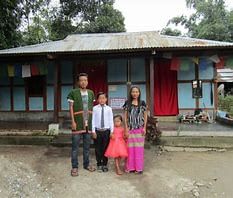
Why in news?
Chairing the maiden Cabinet meeting of his third term, PM Modi approved government assistance for the construction of three crore rural and urban houses under Pradhan Mantri Awas Yojana (PMAY). Of the three crore houses, two crore will be constructed under PMAY-Gramin, while 1 crore under PMAY-Urban
About
- PMAY is a flagship housing initiative of the Government of India launched in 2015 with the aim of providing affordable housing to the urban and rural poor.
- The mission envisions "Housing for All" by the year 2022, marking the 75th year of India’s independence.
- It is a centrally sponsored scheme. Both the Union and the State governments are supposed to financially contribute to it.
Components
PMAY-Urban (PMAY-U)
- Targets urban areas to address housing shortages among the economically weaker sections (EWS), low-income groups (LIG), and middle-income groups (MIG).
- Focuses on the development of affordable housing through various approaches like:
- In-situ Slum Redevelopment
- Affordable Housing in Partnership (AHP)
- Beneficiary-Led Individual House Construction/Enhancement
- Credit-Linked Subsidy Scheme (CLSS)
PMAY-G or PMAY-Gramin
- Focuses on providing affordable housing to the rural poor.
- Aims to construct durable houses with basic amenities for households in rural areas who do not own a pucca house.
Budget allocation
- Both components (rural and urban) of the PMAY combined received Rs. 80,671 crores in the interim budget released in February 2024
Pradhan Mantri Awas Yojana – Gramin (PMAY-G)
- The main aim of the scheme is to provide pucca house with some of the basic amenities.
- This scheme is meant for people who do not own a house and people who live in kutcha houses or houses which are severely damaged.
Concerned Ministry
- Ministry of Rural Development
Cost Sharing
- The cost of the unit is shared in a 60:40 ratio between the Central and State governments in plain areas, i.e., 1.20 lakh of assistance for each unit.
Salient Features of the Scheme
- Beneficiaries are identified using parameters from Socio-Economic and Caste Census (SECC) 2011 data and verified by Gram Sabhas
- Beneficiaries are entitled to 90/95 person-days of unskilled labour under Mahatma Gandhi National Rural Employment Guarantee Scheme (MGNREGS).
- Assistance for construction of toilets of up to Rs.12,000 to be provided under Swachh Bharat Mission-Gramin (SBM-G) in collaboration with MGNREGS or other schemes.
- Payments are made electronically directly to bank accounts or post office accounts that are linked to Aadhaar.
Performance
- Out of the overall mandated target of 2.95 crore houses allocated to States/UTs under the PMAY-G, more than 2.94 crore houses have already been sanctioned to the eligible beneficiaries by the States/UTs.
- 2.61 crore houses have already been completed
Pradhan Mantri Awas Yojana - Urban (PMAY)
- Housing for All is one of the major flagship programmes of Government of India launched on 25th June and being implemented by the Ministry of Housing and Urban Affairs (MoHUA)
- It will ensure all-weather pucca houses to all eligible beneficiaries in the urban areas of the country through States or UTs or Central Nodal Agencies by the year 2022, when Nation completes 75 years of its independence.
Some initiatives under PMAY-U:
- Affordable Rental Housing Complexes (ARHCs): A sub-scheme under PMAY-U, it aims to provide ease of living to urban migrants or poor by giving access to dignified affordable rental housing close to their workplace.
- Global Housing Technology Challenge - India (GHTC-India): It aims to identify and mainstream innovative construction technologies from across the globe for the housing construction sector that are sustainable, eco-friendly, and disaster-resilient.
- CLSS Awas Portal (CLAP): The portal facilitates processing of applications along with tracking of subsidy status by beneficiaries.
- ANGIKAAR: It is a campaign for social change management initiated by ‘Housing for All’ Mission in 2019. It has achieved the objective to build capacities of PMAY-U beneficiaries in adapting to change through door-to-door awareness on best practices.
Extension of timeline
- In August 2022, the government approved the continuation of the PMAY-U up to December 31, 2024, for the completion of already sanctioned houses till March 31, 2022.
GS2/Polity
On Special Category Status for Andhra
Source: The Hindu

Why in news?
Now with the completion of the 2024 Lok Sabha elections, the demand for SCS to Andhra is again gaining attention.
Unfulfilled Promise:
- Despite assurances by the previous Prime Minister and BJP leaders, the Special Category Status (SCS) promised to Andhra Pradesh post bifurcation remained unfulfilled.
Economic Struggles:
- Andhra Pradesh faces revenue deficits and escalating debts post-bifurcation, hampering its development projects and infrastructure initiatives.
Dependency on Central Aid:
- With the need for funding for critical projects like Amaravati's development and ongoing revenue deficits, Andhra Pradesh seeks central assistance for its economic stability and growth.
Five factors stood as the qualifying benchmark for the granting of SCS:
- States that comprise a majority tribal population, low density of population, hilly States and close to international borders
- States that have socio-economic and industrial backwardness
- States that lack adequate State finances
At present, the States that have the SCS include Arunachal Pradesh, Assam, Himachal Pradesh, Jammu and Kashmir, Manipur, Meghalaya, Mizoram, Nagaland, Sikkim, Tripura, and Uttarakhand.
Why did Chandrababu Naidu, back in 2018, settle for a special package?
- Pressure from Opposition: Facing criticism and a strong opposition campaign over the unmet promise of SCS, Naidu, then allied with the NDA, agreed to a Special Package (SP) as an alternative.
- Naidu's decision to accept the SP was influenced by political considerations, including the need to maintain stability within the NDA alliance and counter opposition attacks.
Is the State qualified to be granted special status?
- Debatable Qualification: Andhra Pradesh's eligibility for SCS is contested, with some arguing it doesn't meet the criteria outlined for special status, including socio-economic and geographical disadvantages.
- Previous Annulment: The 14th Finance Commission equated SCS with general category status and annulled it for new states, citing increased tax devolution and revenue deficit grants as alternatives.
What did the 14th Finance Commission state?
- Alternative Grants: Instead of SCS, the commission increased tax devolution to states and introduced revenue deficit grants to address fiscal disparities, providing Andhra Pradesh with financial assistance.
- Scope for Review: While the 14th Finance Commission did not explicitly rule out SCS, it left the decision to the Union Government, suggesting a potential review by subsequent finance commissions and policy bodies.
Way forward:
- Comprehensive Economic Reform: Implement structural reforms to boost economic growth, reduce fiscal deficits, and attract investments, ensuring sustainable development beyond dependency on special status or central aid.
- Targeted Development Projects: Prioritize funding for infrastructure projects based on critical needs and potential economic returns, focusing on sectors like agriculture, manufacturing, and technology to drive growth and employment.
Mains PYQ:
- The political and administrative reorganization of states and territories has been a continuous ongoing process since the mid-nineteenth century. Discuss with examples. (UPSC IAS/2022)
GS2/International Relations
BRICS Foreign Ministers’ Meeting
Source: Times of India
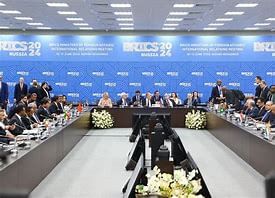
Why in news?
India joined a meeting of foreign ministers from the BRICS group, which was held in Russia. This meeting was the first one after BRICS expanded in 2023 to include Egypt, Ethiopia, Iran, Saudi Arabia, and the UAE became as full-time members.
What is BRICS?
- Members: BRICS (Brazil, Russia, India, China, South Africa)
- Origin: Coined by economist Jim O’Neill in 2001 as BRIC, formalized as BRICS in 2010
- Formation: First meeting of BRIC Foreign Ministers in 2006
- South Africa’s Inclusion: Invited to join BRIC in December 2010
- Global share of BRICS:
- Population: 41%
- GDP: 24%
- Global trade: 16%
- Chairmanship: Rotated annually among members, following sequence B-R-I-C-S
- India’s Hosting: Hosted the 2021 BRICS Summit
- Key Initiatives:
- New Development Bank (NDB) established in 2014: Approved 70 infrastructure and sustainable development projects
- Contingent Reserve Arrangement signed in 2014: Aims to forestall short-term balance of payments pressures and strengthen financial stability
- Customs agreements signed for trade facilitation
- BRICS Remote Sensing Satellite Constellation initiated in 2021: Involves six existing satellites developed by members
Objective of BRICS
The primary objectives of BRICS (Brazil, Russia, India, China, and South Africa) are to promote economic cooperation, development, and influence in world affairs. Key goals include fostering economic growth and cooperation among member nations, creating institutions for development financing, and strengthening political coordination and dialogue on international issues.
BRICS-11 Expansion
BRICS celebrated its 15th summit by adding six new members, growing from five to eleven countries. This move aims to boost its global influence. New members include Egypt, Iran, Saudi Arabia, UAE, Ethiopia, and Argentina, expanding BRICS’ reach across different regions. These countries full membership commenced on January 1, 2024.
Challenges within BRICS
- No Unified Vision: BRICS lacks a clear and unified vision for addressing global issues, hindering coordinated action.
- Bilateral Conflicts: Tensions between member countries, such as China-India border disputes and Russia’s conflicts, undermine cohesion and collaboration within BRICS.
- Economic Disparities: Economic inequality among member nations, with China dominating the group economically, poses challenges to equitable decision-making and cooperation.
- Trade Imbalances: Trade imbalances among member states hinder intra-BRICS trade and economic integration efforts.
- Heterogeneity: Cultural, linguistic, and political diversity among member nations limit the development of common strategies and objectives.
- Limited Institutional Framework: BRICS lacks robust institutional mechanisms for effective coordination and implementation of collective initiatives.
GS2/Polity
Why are BJP and Allies Vying for the Post of Speaker of Lok Sabha
Source: Indian Express
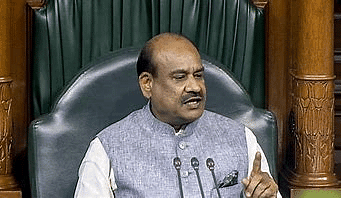
Why in News?
The TDP and JD (U), two of the BJP's main NDA allies, are reportedly vying for the position of Speaker as the 18th Lok Sabha gets ready to convene. The Speaker is chosen as the Presiding Officer of the Lok Sabha following the administration of the oath to new members by a protem or temporary Speaker.
What are the Powers of the Speaker of Lok Sabha?
- About the office: Article 93 of the Indian Constitution provides for the offices of the Speaker and Deputy Speaker who are to be elected "as soon as may be" after the commencement of the House.
- Election and term of the Speaker: S/he is elected by a simple majority in the House and the term ends with the dissolution of the House. S/he can also resign or can be removed from office before that.
- Removal of the Speaker: As per Article 94 of the Constitution, a motion of no-confidence can be moved against the Speaker with notice of 14 days. Also, like any other member of the House, s/he can face disqualification.
- Qualification of the Speaker: There are no specific qualifications for becoming Speaker, which means any member is entitled to be considered.
How is the post of Speaker distinct from other members in the House?
- The Speaker is the Presiding Officer of the Lok Sabha and plays a crucial role in parliamentary democracy.
- The post differs from other members in the following ways:
- The placement of the Speaker's chair in the House.
- S/he has a casting vote and is in charge of the functioning of the House and plays a crucial constitutional role in dealing with disqualification of members.
- The salary of the Speaker is drawn from the Consolidated Fund of India unlike for other MPs.
- Decides how the Lok Sabha is conducted: The conduct of government business is decided by the Speaker in consultation with the Leader of the House. Prior permission of the Speaker is required for members to ask a question, or to discuss any matter.
- The Speaker has vast powers in ensuring that the Rules and Procedure for the functioning of the House are followed. The Speaker has the power to expunge (in full or in part) remarks that s/he may consider to be unparliamentary.
No-Confidence Motion
- One of the most important times when a Speaker's impartiality impacts the Opposition is when a motion of no-confidence is moved against the government.
- For example, when the YSRCP and TDP gave notices for a motion of no-confidence in 2018, the then Speaker adjourned the House several times before admitting the motion and putting it to vote.
Casting Vote
- According to Article 100 of the Constitution, the Chairman of Rajya Sabha or Speaker of Lok Sabha shall not vote in the first instance, but shall exercise a casting vote in the case of any equality of votes.
- Conventionally, the Speaker votes in favour of the government.
Disqualification of Members
- The Tenth Schedule or the anti-defection law, introduced to the Constitution through the 52nd (Amendment) Act 1985, gives the Speaker of the House the power to disqualify legislators who 'defect' from a party.
- In the Kihoto Hollohan case (1992), the SC upheld the power vested in the Speaker and said that only the final order of the Speaker will be subject to judicial review.
Significance of the Post of Speaker for the Opposition and the NDA Allies
For the Opposition to have a voice in the House, the Speaker's neutrality/impartiality is an essential check and balance. S/he is considered the final interpreter of the provisions of the Constitution of India (in matters dealing with Lok Sabha), the Rules of Procedure and Conduct of Business of Lok Sabha.
- S/he also decides on the disqualification of a member and is the final authority on matters of defection.
- The power of the Speaker under the Tenth Schedule of the Constitution is perhaps more significant than how the House is conducted because defections can alter numbers in the House and cause a government to fall.
GS2/Polity
PM Modi Cabinet Formation 2024
Source: Financial Express
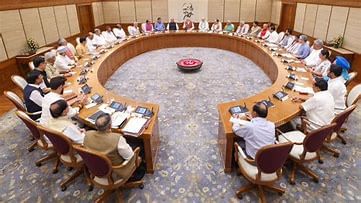
Why in news?
Prime Minister Narendra Modi allocated portfolios for the Modi 3.0 government with several key ministers retaining their portfolios. Despite the expansion to 72 ministers due to coalition needs, there was no change in the Cabinet Committee on Security (CCS).
Cabinet Committees
About
- Cabinet Committees are smaller groups of ministers within the Government of India, each focused on specific areas of governance.
- They are instrumental in reducing the burden on the full Cabinet by enabling more focused discussions and faster decision-making in specialized areas.
Constitutional/legal provisions
- Articles 74 and 77 provide the general framework for the executive's functioning.
- Article 74 establishes the existence of the Council of Ministers to aid and advise the President.
- Article 77 deals with the conduct of business of the Government of India and allows the President to make rules for the more convenient transaction of business.
- Government of India (Transaction of Business) Rules, 1961 provides detailed mechanisms and empowers the Prime Minister to constitute Cabinet Committees.
Membership
- The membership of each committee varies from three to eight. Usually, only Cabinet ministers are members of these committees.
- It is not uncommon for non-Cabinet ministers to be members or special invitees to committees.
Process
- After the Union Cabinet is sworn in and ministerial portfolios are allocated, the Prime Minister sets up high-profile Cabinet Committees.
- These committees consist of selected Cabinet members and are assigned specific functions.
Function
- The committees resolve issues and formulate proposals for the consideration of the Cabinet and take decisions on matters assigned to them.
- The Cabinet is empowered to review such decisions.
Existing Cabinet Committees
- Appointments Committee of the Cabinet
- Cabinet Committee on Economic Affairs
- Cabinet Committee on Political Affairs
- Cabinet Committee on Investment and Growth
- Cabinet Committee on Security
- Cabinet Committee on Parliamentary Affairs
- Cabinet Committee on Employment & Skill Development
- Cabinet Committee on Accommodation
CCS - Cabinet Committee on Security
- CCS deals with issues related to national security and defense policy.
- Major decisions regarding significant appointments, issues of national security, and defense expenditure of India are taken by the CCS.
- The CCS also deliberates on issues relating to law and order, internal security, policy matters concerning foreign affairs on security-related issues, and matters related to atomic energy.
Prime Minister's Oversight
- PM Modi retains key responsibilities, including the Ministry of Personnel, Public Grievances and Pensions, Atomic Energy, and Space.
- He oversees all important policy issues and any portfolios not assigned to other ministers.
Analysis
The Cabinet's composition reflects a balance between continuity and addressing coalition needs, ensuring experienced leadership in critical ministries while integrating new members for strategic growth.
The focus is on cumulative progress in governance, with stability in key security and economic areas.
GS3/Defence & Security
Why India needs a third aircraft carrier
Source: The Hindu
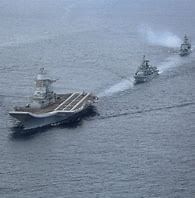
Why in news?
Recent reports from the media suggest that the Indian Navy’s persistent request for a third aircraft carrier is edging closer to reality, as Cochin Shipyard Limited (CSL) prepares to commence construction on an additional Vikrant-class platform weighing approximately 40,000 tonnes.
About Indigenous Aircraft Carrier-2 (IAC-2)
The Indigenous Aircraft Carrier-2 (IAC-2) is a proposed second Indigenous aircraft carrier for the Indian Navy. It is planned to be similar to the first indigenous aircraft carrier, INS Vikrant, but with some modifications. The IAC-2 is expected to have a displacement of around 45,000 tonnes and will be equipped with STOBAR (short take-off but arrested recovery or short take-off, barrier-arrested recovery) technology.
Operational Versatility:
- IAC-2 will enhance the Indian Navy’s operational flexibility, enabling it to conduct a wide range of missions including power projection, maritime security, and humanitarian assistance. The carrier’s advanced capabilities and modern technologies will ensure its effectiveness in addressing evolving maritime challenges.
Strategic Deterrence:
- IAC-2 will serve as a key deterrent against potential adversaries, bolstering India’s maritime deterrence posture and signalling its commitment to safeguarding its maritime interests. Its presence will reinforce India’s position as a major maritime power in the Indo-Pacific region, contributing to regional stability and security.
Technological Advancement:
- The construction and operation of IAC-2 will drive technological innovation and advancement in India’s indigenous defence industry. It will stimulate research and development efforts, fostering self-reliance and technological sovereignty in naval defence capabilities.
Budgetary issues:
- The estimated cost of constructing and operating IAC-2 is high, raising concerns about budgetary constraints and the allocation of resources amidst competing defence priorities.
Operational Vulnerabilities:
- IAC-2 may face challenges from evolving anti-access/area denial (A2/AD) strategies employed by potential adversaries such as China and Pakistan. The carrier’s large size and visibility make it susceptible to modern maritime warfare tactics, including advanced missile systems and submarine threats, potentially compromising its operational effectiveness.
Strategic Alignment:
- Questions may arise about the carrier’s role and relevance in addressing contemporary security threats and whether alternative defence investments would provide better national security and strategic deterrence returns.
Upgrading Capabilities as a Solution
Enhanced Airborne Capabilities:
- The Indian Air Force (IAF) can project maritime power using aircraft like the SEPECAT Jaguar IM/IS and Sukhoi Su-30MKI fighters, which can carry advanced maritime strike weapons. The Su-30MKI squadron, equipped with BrahMos-A supersonic cruise missiles, enhances maritime strike capabilities.
Strengthening Island Defenses:
- Upgrading the military capabilities of the Andaman and Nicobar archipelago could create an A2/AD maritime ‘exclusive zone’, deterring Chinese naval activities.
Balanced Force Development:
- Diversifying investments to upgrade existing surface combatants, submarines, and air assets can provide a balanced approach to enhancing naval capabilities. Ensuring adequate funding for other critical areas like mine counter-measures, maritime patrol aircraft, and naval utility helicopters is essential for comprehensive maritime security.
Conclusion:
- While the IAC-2 represents a significant advancement in India’s naval capabilities, addressing financial constraints, strategic vulnerabilities, and diversifying investments in maritime and airborne assets are crucial for achieving a robust and balanced defence strategy.
Mains PYQ:
What are the maritime security challenges in India? Discuss the organisational, technical and procedural initiatives taken to improve maritime security. (UPSC IAS/2022)
GS2/International Relations
What is happening in the French territory of New Caledonia?
Source: The Hindu
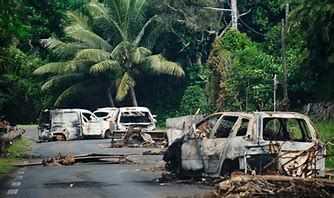
Why in news?
New Caledonia, France's Pacific island territory, is under a state of emergency due to deadly riots.
About New Caledonia
- New Caledonia is a French overseas territory in the Pacific.
- It enjoys a large degree of autonomy but depends heavily on France for matters like defence and education.
- It includes the island of New Caledonia where the capital, Noumea, is located, the Loyalty Islands; the Belep Islands; and the Ile des Pins.
- New Caledonia's lagoons were designated a UNESCO World Heritage site in 2008.
The Crisis: A Quick Recap
- New Law: The French government passed a law that has upset people in New Caledonia.
- Vote Reforms: Now, French citizens who lived on the island for 10 years or more can vote. The government says it's fairer this way.
- Resistance from Indigenous people: The locals, especially the Kanak community, feel this gives too much power to French settlers and stops them from gaining independence.
How did France occupy this territory?
- Exploration: British explorer James Cook named the island New Caledonia in 1774 after the Latin name for Scotland.
- French Annexation: France annexed it in 1853 and New Caledonia became a French overseas territory in 1946.
- Fewer Locals: France brought in lots of French people. Now, the original Kanak people are only 40% of the population, while others, like the Caldoches and newer French arrivals, make up the rest.
Past Protests and Promises
- There were similar fights in the 1990s, leading to promises of more power for locals.
- In 2018, 2020, and 2021, they voted on whether to be independent from France. But many boycotted the last vote, saying it wasn't fair because of the pandemic.
Why is it significant for France?
- France sees New Caledonia as important for keeping power in the region.
- It wants to stay strong in the Pacific to stand up to other big powers, like China.
PYQ:
- Explain how the foundations of the modern world were laid by the American and French revolutions.
GS3/Economy
Pradhan Mantri Kisan Samman Nidhi (PM-KISAN) Scheme
Source: The Hindu
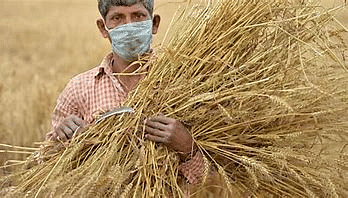
Why in news?
The Union Government released the 17th installment of the PM Kisan Nidhi as the first decision of the newly sworn-in Narendra Modi government. The Union Agriculture Ministry said in a release that this will benefit 9.3 crore farmers and distribute around ₹20,000 crore.
About PM-KISAN (Objectives, Features, Eligibility, Achievements, etc.)
Pradhan Mantri Kisan Samman Nidhi (PM-KISAN):
- The Pradhan Mantri Kisan Samman Nidhi (PM-Kisan) Yojana came into effect from December 1, 2018.
- Under the scheme, income support of Rs 6000 per annum is provided to all eligible farmer families across the country in three equal installments of Rs 2,000 each every four months.
- The fund of Rs 2,000 is directly transferred to the bank accounts of the eligible farmers/farmer's family under the Direct Benefit Transfer Mode.
Nodal Ministry
- Ministry of Agriculture and Farmers Welfare
Objective of PM-KISAN:
To supplement the financial needs of all landholding farmers’ families in procuring various inputs to ensure proper crop health and appropriate yields, commensurate with the anticipated farm income as well as for domestic needs.
Definition of Farmer’s Family:
- A landholder farmer’s family is defined as “a family comprising of husband, wife and minor children” who owns cultivable land as per land records of the concerned State/UT.
- The entire identification process of the family rests with the State/UT Governments.
Pattern of Funding:
It is a Central Sector Scheme with 100% funding from the Central Government.
Who is Eligible?
- Landholding farmers’ families with cultivable landholding in their names,
- Farmers from both the urban and rural areas,
- Small and Marginal farmers families.
Who is Not Eligible for the Scheme?
- Institutional landholder,
- Present or retired officers and employees of state/central government as well as PSUs and government autonomous bodies,
- Beneficiaries with higher economic status are not eligible,
- Those who pay income tax,
- Farmer families holding constitutional posts,
- Professionals like doctors, engineers and lawyers,
- Retired pensioners with a monthly pension of over Rs 10,000.
Performance/Achievements of the PM-KISAN Scheme:
- The scheme provides income support to landholding farmers in India, which helps them procure various inputs related to agriculture and allied activities and their domestic needs.
- The government is trying to reach and pass on the benefits to all eligible farmer families through this scheme. This is one of the finest examples of good governance.
- More than 11 crore farmers have availed the scheme and an amount of Rs 2.42 lakh crore has been transferred to their accounts.
- This makes it the largest DBT scheme in the country.
- The process of registration of beneficiaries has been made simple and easy through a mobile app — PM KISAN portal scheme also provides for grievance redressal and a helpdesk.
- Through this initiative, more than 13.5 lakh grievances have been addressed by the concerned state authorities.
- The scheme has a significant impact on easing liquidity constraints as a large share of farmers have constraints on obtaining formal credit.
- While the scheme is pitched as a general cash transfer scheme for farmers, its role in the adoption of modern technologies remains an important contributing factor in the modernization of agriculture by enhancing productive investment by farmers.
GS3/Science and Technology
What are Coronal Mass Ejections (CMEs)?
Source: Times of India

Coronal Mass Ejections (CMEs)India's solar mission Aditya-L1 recently captured images of the Sun and its activity during a solar storm in May. The Active region AR13664 on the Sun erupted several X-class and M-class flares, which were associated with Coronal Mass Ejections (CMEs).
- CMEs were first discovered in 1971 and their significance in solar-terrestrial relations was established in the 1980s.
- They consist of massive clouds of solar plasma and magnetic field lines, often accompanying solar flares and filament eruptions.
- The frequency of CMEs varies with the 11-year solar cycle, with approximately one a week observed during solar minimum and two to three CMEs per day near solar maximum.
- CMEs travel at speeds of thousands of kilometers per hour and can lead to geomagnetic storms, aurorae, and occasionally damage to electrical power grids. Not all CMEs interact with Earth, but those that do can disrupt satellite communications and power grids.
- Halo CMEs are Earth-directed CMEs visible as rings in white-light coronagraph observations.
- Aditya-L1 is India's first space mission dedicated to observing the Sun. It is ISRO's second space-based astronomy mission after AstroSat, launched in 2015.
- Launched on September 2nd, 2023, Aditya-L1 aims to observe the Sun and the solar corona.
- The mission features seven payloads onboard the Polar Satellite Launch Vehicle (PSLV), each serving a specific function:
- Visible Emission Line Coronagraph (VELC): Images the solar corona in visible light for structural and dynamic studies.
- Solar Ultraviolet Imaging Telescope (SUIT): Captures images of the solar chromosphere and transition region in ultraviolet light for understanding heating and dynamics.
- Solar Low Energy X-ray Spectrometer (SoLEXS): Measures the solar X-ray spectrum to study solar flares and coronal mass ejections.
- High Energy L1 Orbiting X-ray Spectrometer (HEL1OS): Studies high-energy solar X-rays to comprehend particle acceleration.
- Plasma Analyser Package for Aditya (PAPA): Measures solar wind plasma properties to analyze its interaction with Earth's magnetosphere.
- Aditya Solar Wind Particle Experiment (ASPEX): Examines energetic particle properties in the solar wind to understand their effects on Earth's atmosphere.
- Solar Irradiance Monitor (SIM): Monitors solar irradiance variations and their impact on Earth's climate.
Aditya L1 aims to study coronal heating, solar wind acceleration, coronal magnetometry, the origin and monitoring of near-UV solar radiation, and continuously observe the photosphere, chromosphere, and corona, solar energetic particles, and the Sun's magnetic field.
Location of AdityaAditya is positioned in an L1 Halo orbit approximately 1.5 million km from Earth, allowing continuous observation of the Sun. The L1 point, also known as Lagrangian Point 1, is one of five points in the Earth-Sun orbital plane with enhanced regions of attraction and repulsion due to gravitational forces between the two bodies.
|
63 videos|5397 docs|1142 tests
|
FAQs on UPSC Daily Current Affairs - 11th June 2024 - Current Affairs & Hindu Analysis: Daily, Weekly & Monthly
| 1. What is the target number of additional rural and urban houses under PMAY? |  |
| 2. What are the components of PMAY? |  |
| 3. What is the budget allocation for PMAY? |  |
| 4. Which ministry is responsible for implementing PMAY? |  |
| 5. What are the verticals of PMAY-U? |  |
















